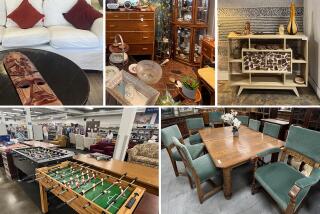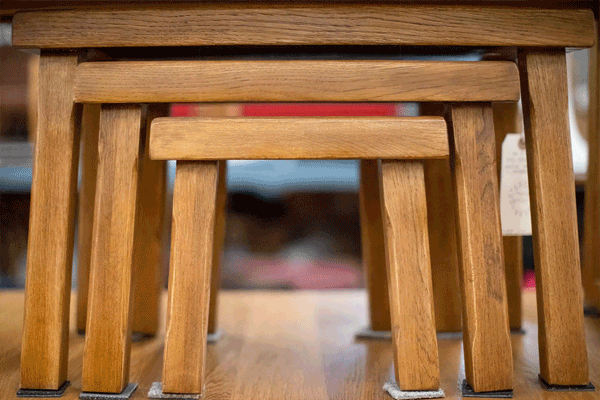AROUND HOME : American Empire Furniture
- Share via
FOR MANY YEARS, American 19th-Century furniture has been overlooked, while furniture of earlier periods commands the highest prices at auction. Empire furniture, in particular, has never been popular. This is hard to understand, since the furniture itself, dating from the 1820s and the 1830s, is graceful and well designed and uses the finest mahogany and rosewood veneers. It is far simpler--and often more appealing--than the French Empire and English Regency furniture upon which it is based. Ormolu is hardly ever used, and all excess has been avoided.
Of the cabinetmakers who specialized in the style, the best known, and certainly the finest craftsman, was Duncan Phyfe (1768-1854) of New York City. Born in Scotland, he came to America at the age of 16 and served as an apprentice to a cabinetmaker in Albany. By 1792, he had made his way to New York City, where he established a highly successful workshop. Elegance and simplicity were his trademarks.
His name is forever associated with Empire furniture, a style based on European models but adapted to American tastes. Fine examples of the style can be seen today in the Old Merchant’s House on East 4th Street in New York City, now a museum and almost perfectly restored to the original condition that existed when the Treadwell family bought the house in 1835. During the early 19th Century, quantities of sofas, chairs, beds and pedestal tables were made in the Empire style, along with the popular window seats (really small sofas, designed to fit into a window alcove)--all variations of the elegant forms developed by Phyfe. At the time, French influence was pronounced, because many pattern and design books from Paris found their way to the United States after the birth of the new nation. There were also many emigre cabinetmakers like Charles-Honore Lannuier of New York and Anthony Quervelle of Philadelphia, and there was a considerable amount of imported furniture on hand, the result of increased trade between France and the United States.
In its American form, Empire furniture is not easy to find but, when available, can often be bought at bargain prices. At auction in 1988, it sold for far less than other American furniture. A Federal carved mahogany sofa and a carved window seat, for example--both attributed to the shop of Duncan Phyfe--sold at Christie’s for $49,500 and $26,400, respectively. During the same year, however, a pair of American Empire side chairs, c. 1835, brought $15,000. These were handsome and gracefully designed pieces whose lines blend well with contemporary decor.
Look for Empire furniture at Panache, Vivian Farren, Edwin-Anthony, all in Los Angeles; Richard Gould in Santa Monica; Carlyle Eubank in Beverly Hills; Richard Yeakel and Nicholson’s Antiques, both in Laguna Beach; Jay’s Antiques in Pasadena, and The Snow Goose in La Jolla.


